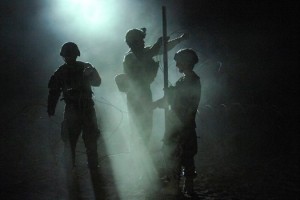War Costs Part 3: Hidden costs in the war budget
Mary Kaszynski
Afghanistan Study Group Blogger
Budgeting for war is tricky. On the one hand, when it comes to supporting our troops, cutting corners is out of the question. On the other hand, spending billions of dollars every year without questioning what the Department of Defense labels “war costs” isn’t the answer.
We’ve learned this the hard way over the past ten years. For several years the administration used the emergency supplemental process, which allowed war budgets to bypass the regular appropriations process- and the scrutiny applied to regular appropriations. Now, war spending is back in the standard budget, but are still separated from base costs in the overseas contingency operations (OCO) account. This reinforces the special status of war funding: if it’s for the war, it gets a free pass.
The bottom line here is that the lack of accountability in war budgeting is a consistently exploited loophole. OCO serves as a “safety valve” for items that don’t fit into the base budget. And war costs are artificially high as a result.
It’s particularly easy to sneak base defense costs into the war account because of the pervasive lack of transparency in the defense spending. This shouldn’t come as a surprise – this is the agency, after all, that is still unable to preform a complete audit. Even the Congressional Research Service finds it difficult to get the data on what the war budget actually paid for, for a number of reasons: “unexplained discrepancies in DOD’s war cost reports,” “difficulty in allocating funds between [Iraq and Afghanistan],” and “limited DOD information on the factors driving costs incurred to date as well as the lack of a history of war outlays or actual expenditures because war and baseline funds are mixed in the same accounts.”
Even with the OCO safety valve, base budgets have grown considerably, and they may continue to do so, thanks in part to the opacity of war funding. One of the arguments for maintaining high levels of defense spending is the need to “reset” the force – that is, returning to pre-war readiness. In fact, most of the costs of the reset for the Army and the Marine Corps have already been absorbed into the OCO budget.
The Defense Department isn’t the only guilty party here. Congress, always reluctant to scrutinize war spending, has taken advantage of war costs loopholes as well. The latest example: the debt ceiling deal exempted war costs from the spending caps. The Senate exploited this its fiscal year ‘12 appropriations bill, moving $10 billion in base defense costs to the OCO account.
The specific problem here – the war costs loophole – will eventually fade away. But the underlying problems – lack of transparency, unwillingness to scrutinize security spending – will remain. We need/deserve/should demand greater accountability in the defense budget, and war funding is the right place to start.
*And that’s just in the defense budget allocations for “war costs”- a more comprehensive estimate of the costs (including, for example, veterans care) is $3.2 trillion.


